SARS-CoV-2 infection rates and associated risk factors in healthcare workers: systematic review and meta-analysis
- PMID: 39922967
- PMCID: PMC11807171
- DOI: 10.1038/s41598-025-89472-5
SARS-CoV-2 infection rates and associated risk factors in healthcare workers: systematic review and meta-analysis
Abstract
To protect healthcare workforce during the COVID-19 pandemic, rigorous efforts were made to reduce infection rates among healthcare workers (HCWs), especially prior to vaccine availability. This study aimed to investigate the prevalence of SARS-CoV-2 infections among HCWs and identify potential risk factors associated with transmission. We searched MEDLINE, Embase, and Google Scholar from 1 December 2019 to 5 February 2024. From 498 initial records, 190 articles were reviewed, and 63 studies were eligible. ROBINS-E tool revealed a lower risk of bias in several domains; however, some concerns related to confounding and exposure measurement were identified. Globally, 11% (95% confidence interval (CI) 9-13) of 283,932 HCWs were infected with SARS-CoV-2. Infection rates were associated with a constellation of risk factors and major circulating SARS-CoV-2 variants. Household exposure (odds ratio (OR) 7.07; 95% CI 3.93-12.73), working as a cleaner (OR 2.72; 95% CI 1.39-5.32), occupational exposure (OR 1.79; 95% CI 1.49-2.14), inadequate training on infection prevention and control (OR 1.46; 95% CI 1.14-1.87), insufficient use of personal protective equipment (OR 1.45; 95% CI 1.14-1.84), performing aerosol generating procedures (OR 1.36; 95% CI 1.21-1.52) and inadequate hand hygiene (OR 1.17; 95% CI 0.79-1.73) were associated with an increased SARS-CoV-2 infection. Conversely, history of quarantine (OR 0.23; 95% CI 0.08-0.60) and frequent decontamination of high touch areas (OR 0.52; 95% CI 0.42-0.64) were protective factors against SARS-CoV-2 infection. This study quantifies the substantial global burden of SARS-CoV-2 infection among HCWs. We underscore the urgent need for effective infection prevention and control measures, particularly addressing factors such as household exposure and occupational practices by HCWs, including cleaning staff.
Keywords: COVID-19; Healthcare workers (HCWs); Household; Infection; Occupational; Quarantine; Risk factor; SARS-CoV-2.
© 2025. The Author(s).
Conflict of interest statement
Declarations. Competing interests: The authors declare no competing interests.
Figures
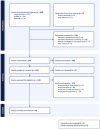
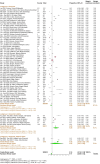
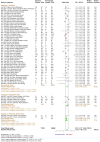
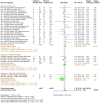

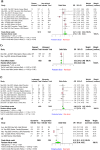

References
-
- World Health Organization. Timeline of WHO’s response to COVID-19, https://www.who.int/news-room/detail/29-06-2020-covidtimeline (2020).
-
- World Health Organization. WHO Coronavirus Disease (COVID-19) Dashboard, https://covid19.who.int (2024).
Publication types
MeSH terms
LinkOut - more resources
Full Text Sources
Medical
Miscellaneous

